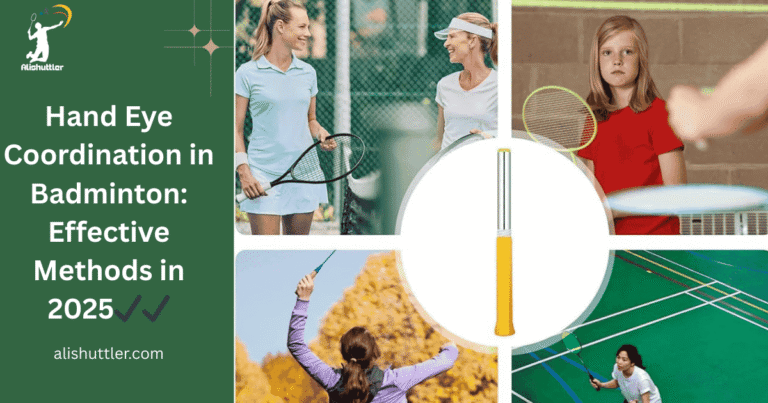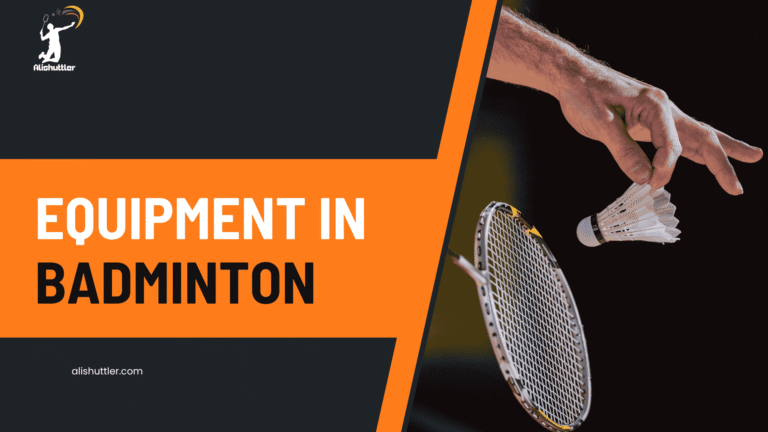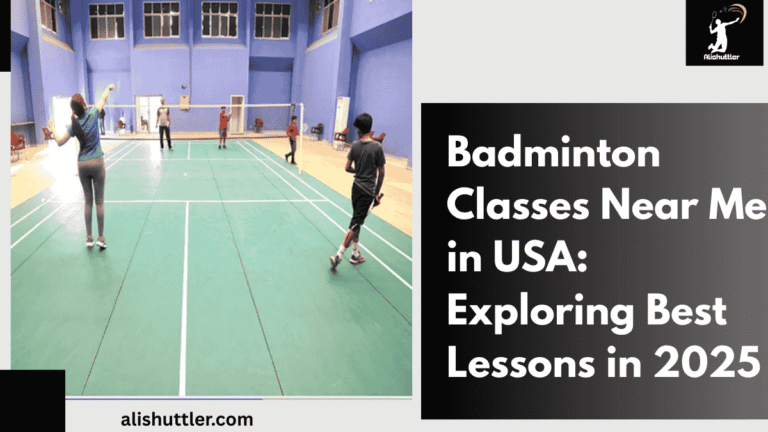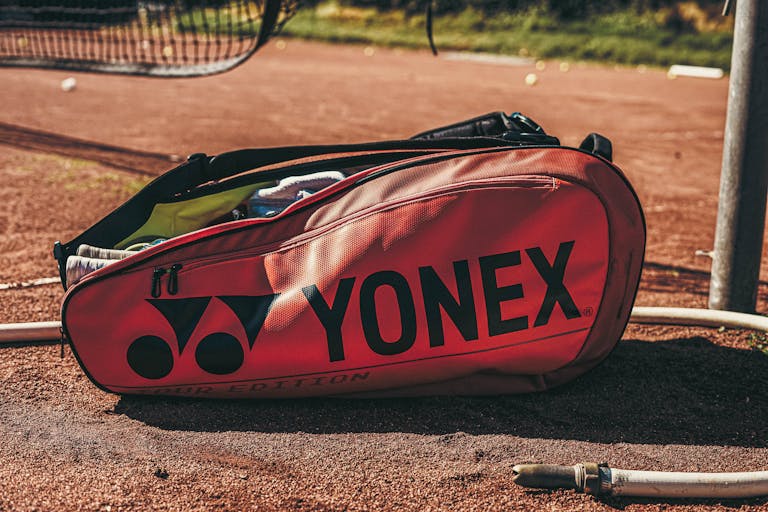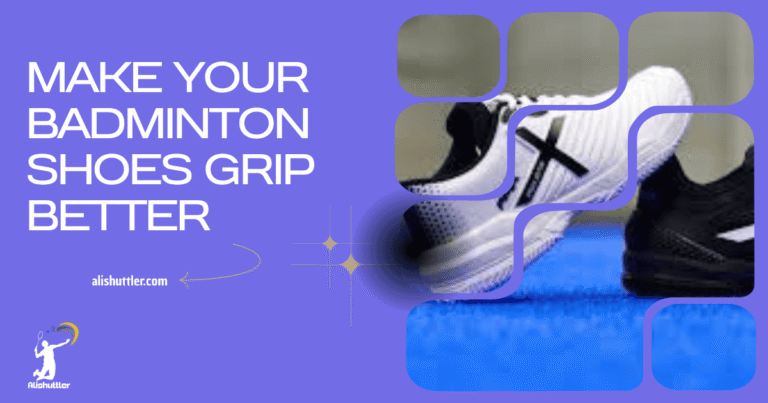Coordination exercises in badminton are drills and activities that assist players in moving with control, balance, and rhythm during play.
These exercises commonly utilize footwork patterns, racket swings, and hand-eye drills. Typical examples are ladder runs, shadow footwork, and multi-shuttle routines.
Good coordination enables players to respond to rapid shots, change directions fluidly, and strike with precision.
The main body will discuss important exercises, how they function, and advice on incorporating them into consistent training.
The Coordination Core
Coordination in badminton refers to moving your limbs in unison to effectively play. It gets you to the shuttle, keeps you balanced, and makes you quick on court. A nicely coordinated player can transfer weight and switch moves without losing command.
The core is the primary connection between your lower and upper body, allowing you to generate force when and where you need it. Powerful core coordination not only keeps you stable, but prevents you from expending unnecessary energy and can prevent injuries. With practice, you become more efficient at visualizing, reacting, and moving in that split second–critical as the shuttlecock can travel at speeds of up to 300kph.
Hand-Eye
Hand-eye coordination is crucial when it comes to making clean shots. You can develop it through activities such as catching and hitting shuttlecocks or bouncing them on your racket. Try following the shuttle with your eyes as your partner varies the velocity or direction.
It hones your reflex and allows your bullets to hit home. Fast adjustments are in every rally. Employ drills in which you need to adjust your racket’s angle, or strike the shuttle after it rebounds from a wall.

These force you to improvise, just like in a match. For an added challenge, establish visual targets such as colored markers to strike during your swings. This goes a long way toward making your swings fluid and crisp, developing the eye-hand connection.
Footwork
Footwork drills will condition your moves to be both rapid and fluid. Shuttle runs and sidesteps condition you to cover more court in less time. Lateral shuffles get you to the shuttle on either side, and quick steps allow you to change directions rapidly when your opponent catches you off guard.
Directional drills–net to backcourt, side to side, etc.–condition your feet for all game situations. Incorporating jump rope drills increases your general foot speed. This develops the habit of landing and pushing off on your right, keeping you more stable and efficient.
Balance
Balance keeps you steady as you lunge, jump or twist. Incorporate single-leg stands into your routine and keep yourself upright when you go for the hard shot. Dynamic balance drills, such as standing on one leg while catching a ball, push your muscles to coordinate.
Core work such as planks, side planks, or walking while on a plank develops the foundation you require for firm equilibrium. Plyometric drills — like squat jumps or box jumps — give muscle to your moves so you can maintain your balance even when you explode toward the shuttle.
Timing
Coordination workouts that parallel badminton skills—such as shadow swings timed to a metronome—condition your shot timing. Fun drills, like rallying with targets or reaction balls, keep practice fresh and keep you sharp.
Whip exercises in every workout for a balanced routine. This way, you grind on all aspects of coordination and keep your training fresh. Work these moves regularly and watch your timing and play improve dramatically.
Essential Exercises
Coordination in Badminton is a fundamental skill, pivotal for players to move, react, and strike accurately. These essential drills develop hand-eye coordination, footwork, and teamwork. Incorporating simple exercises like ‘using two tennis balls’ or changing sides every 50 seconds can make drills more productive and enhance overall performance, motivating players to keep going.
1. Shuttlecock Juggling
Juggling a shuttle, or bouncing it on the racket, provides rapid feedback on hand-eye coordination. Beginning with one shuttlecock is excellent for beginners. Players can increase the difficulty by adding a second or even third shuttle.
Switching up the type of movement forehand to backhand bounces, for instance challenges attention and promotes the development of fine motor skills. This drill is a great warm-up and makes practice a little less monotonous.
Juggling as a group, or passing the shuttle back and forth between players, can introduce a teamwork factor.
2. Agility Ladder
An agility ladder on the floor develops quick feet and hones motor Coordination in Badminton. Players can begin with simple, one- or two-step patterns, then experiment with side shuffles, in-and-out hops, or crossover steps for some variation. Each variation targets different agility components and simultaneously increases speed. Incorporating agility training into your routine can enhance your overall performance in racket sports.
Focusing on rhythm and attempting to accelerate your movement every round makes it more effective. Agility ladders work well as one component of a more significant warm-up, combined with some basic drills like shuttle bouncing or a light tennis ball catching to improve Coordination in Badminton skills.
Ladder drills can be varied in a number of different ways. Switch direction or movement every 50 seconds to keep the brain and body sharp. For an extra challenge, take two ladders and have pairs race or mirror each other’s steps on Coordination in Badminton.
3. Wall Rally
Wall rallies are solo drills with just a bare wall and racquet. Players smash shuttles or balls against the wall and try to keep the rally going as long as possible. This drill hones reflexes, shot precision, and timing in a confined area.
Varying shots, soft taps, drives, and clears teach adaptability. Pacing counts. Intensity, sufficient to push limits without slipping into sloppy form. Coordination in Badminton.
Switching drills every couple minutes keeps it fresh and makes it easier to see progress.
4. Shadow Movement
Shadow drills simulate match movement minus the shuttle. It’s all about footwork, body balance and getting into good hitting positions. Imagining an opponent, responding to phantom shots, fosters anticipation and rapid thought.
Taking them at varying speeds, slow, then all-out, honing total-body coordination. For example, doubles players can shadow together to develop team synergy, mimicking actual match situations and practicing court coverage.
Doubles Coordination
Doubles badminton challenges how well a pair can move, strategize, and perform as a single entity, emphasizing the importance of good teamwork and efficient movements. It all relies on intelligent positioning and quick reflexes, where every partner needs to understand where to be and when, to cover the court effectively and return the other team’s shots. Good doubles Coordination in Badminton is what keeps teams dialed in and allows them to dictate rallies.
Positioning
Open communication is crucial for keeping doubles partners aligned during fast-paced play. Partners should continuously discuss who will take the next shot and which areas of the court each player is responsible for covering. They can yell ‘mine’ or ‘yours’ and announce their next moves, which helps prevent confusion, especially when the shuttlecock is hammered down the center. Incorporating efficient movements into their practice sessions enhances their teamwork.
Clear signals also play a pivotal role. Some teams use hand signs to communicate the shot they intend to make or their desired rotation. For instance, a player may indicate a cross-court shot by pointing to the sideline or tapping their racket to signal they will stay at the net. Working on these signals during practice ensures they become second nature by match day.

Drills like open rallies, where players vocalize each shot, or rapid-fire net drills, are effective exercises that teach partners to move and respond in unison, ultimately improving their overall performance.
Communication
Badminton doubles is won and lost on how well partners talk to one another. Even with brief, straightforward commands like “switch” or “attack,” partners can maintain a compact strategy. In practice, partners should talk through their plays, out loud, before and after each rally.
They need to get comfortable with feedback. Sticking to no more than two points of feedback at a time prevents overload. Non-verbal cues help, too. Eye contact, small gestures or a quick nod can all assist.
You want to establish these signals prior to a match so both guys are aware of what to watch for. Communication drills, such as shadow badminton or simulated game situations, allow players to work on both verbal and non-verbal communication in a pressure-free environment.
Rotations
Switching sides is a huge part of doubles. Partners are required to rotate from front to back, or side to side as the rally changes. Rotation drills get players accustomed to switching spots, particularly following a full smash or drop shot.
Glide with fluid passes and smooth transitions to keep the court covered and gaps to a minimum. In practice, though, players can run drills that simulate actual game momentum shifts, such as defending a smash and then charging the net for a kill.
Drill these switches into different kinds of points, defensive, offensive, or neutral, with your practice, and they’ll develop the instinctive habits you need.
Additional Training
Coordination in Badminton gets better with practice, but it gets better with off-court work. Throwing and catching exercises, for example, throwing a ball overhead or through our legs, develop timing and reflexes. Experimenting with different sports, such as ping-pong or soccer, provides athletes with alternate movement patterns and reaction times.
Mindful practice, remaining aware of movement and partner position, assists. Cool drills, such as reaction games or whimsical footwork sequences, make practice exciting and elevate participation.
Beyond The Court
Coordination training in badminton doesn’t stop at the court; it extends to other tasks that enhance both mental and physical agility. Players who explore new racket sports, agility drills, and mindful practice uncover more avenues to expand their skills and keep their training routine fresh. Varied training minimizes overuse injuries and promotes healthy athletic development at any age.
Cross-Training
Cross-training with tennis or table tennis, for example, allows players to develop hand-eye coordination in novel contexts. Incorporating agility drills using alternate rackets or tennis balls can significantly improve reaction time. Tossing a ball back and forth, or practicing wall rally drills with a shuttlecock are effective exercises to develop fast reflexes and coordination skills.
General fitness work, such as weightlifting or yoga, supplements this by increasing strength and flexibility, providing players a stronger foundation for movements on the court. Great footwork is essential, and hopping between sports will assist your badminton performance and rapid directional changes.
Mindfulness in cross-training is paying attention to how your body moves in practice. Whether it’s centering your breath, relaxing before an agility drill, or imagining perfect footwork, these techniques can help players remain calm and make quick decisions even when things get intense.
Mindful Practice
Baseball Coordination in Badminton isn’t drills, it’s mental training. Mindfulness exercises like deep breathing and paying attention to movement assist players in remaining present. Visualization can result in superior performance, allowing sportsmen to see themselves making shots or rallies before they occur.
Relaxation routines, such as meditation or light stretching, can reduce stress and maintain focus during competition. When the heat comes up in competition, players who train these skills remain focused and respond with controlled reaction.
Playful Drills
Drills should be spirited and enjoyable to maintain the players’ focus. Establishing games, such as rallying in a circle or friendly competitions, helps make practice not feel like work. With fun challenges like switching hands or aiming at targets, you’ll keep the whole team involved and committed to coordination in badminton.
Creative drills using goofy balls, incorporating non-traditional movements, keep minds sharp. These drills force players to adjust, think on their feet, and have fun doing it, something that can separate players in the long run.
Cognitive Coordination
It’s not just about physical skill; Coordination in Badminton is a game that requires mental agility. Predicting an opponent’s future move entails game-reading and quick decision-making. Players who train their prediction skills tend to do better on the court.
Being able to adjust to changing situations, like a quick drop shot or fast smash is crucial. Cognitive drills such as ‘calling your shots’ before you take them help increase decision-making speed. Mental flexibility keeps players surprise-proof, and their game sharp.
The Cognitive Link
Cognitive skills are a powerful force in Coordination in Badminton, determining how players respond, anticipate, and adjust during blistering rallies. Good hand-eye coordination promotes not only accurate shots but also safety, endurance, and smart strategic decisions.
Studies demonstrate that with consistent training, coordination can get almost 20% better, impacting both your court performance and everyday activities.
Reaction
Reading an opponent’s body language allows players to anticipate what shots are ahead. Experienced players seek subtle indicators in their adversary’s stance, racket grip and weight transfer.
By observing these cues, athletes predict where a shot is bound. These include drills designed to track shuttle paths and player movements that train the brain and body to work in sync.
Reaction balls, easy colored cones and split-step drills construct quick reflexes. Researchers discover that typical badminton player reaction times are between .50 and 0.75 seconds.
Faster reactions tend to translate to better performance, with elite players exhibiting much sharper responses than their non-elite counterparts. Response times beyond 200–1000 ms could indicate predictive and/or slip errors.
Prediction
Expecting isn’t just responding, it’s predicting. Players who watch match video or pattern analyze learn to recognize patterns of plays.
When players understand a competitor likes drop shots post-smash, they can prepare for that. Scenario training, where coaches create real-game situations, compels players to hone their prediction skills.
They require players to capture subtle cues, such as a shoulder drop or grip shift, before the shuttle even flies. Viewing past matches and analyzing errors educates on what to anticipate and how to prepare for different strokes.
Good foresight means less astonishment and greater moves.
Adaptation
Flexibility is altering game plans or shot selections on the fly. Badminton players encounter a variety of playing styles and have to change tactics, sometimes mid-rally.
For example, when confronted with a fast attacker a player may have to mix up defensive shots or decelerate the game. Feedback sessions following practice allow players to identify where they successfully adapted or missed cues.
Coaches could display samples from the drill, highlighting how a player varied their footwork or shot angle in response to a new strategy. Unpredictably shifting-target drills develop flexibility.
Adapting fast leads to fast performance, but it creates long-term growth.
Injury Prevention
Coordination is directly related to injury prevention. Controlled players are less likely to twist ankles or strain muscles.
Body awareness, AKA knowing where each limb is during play, keeps you out of dangerous positions. Guided range of motion drills, such as slow lunges or shadow swings, instill safe habits.
Smart energy utilization keeps fatigue out of the picture, decreasing late-game injury risk.
Injury Prevention
Badminton exerts significant stress on the body, particularly the lower limbs and shoulders. Good coordination training not only makes you better at the game it also helps keep you from getting injured. Developing body awareness, controlled movement, and listening to feedback from coaches all contribute to Coordination in Badminton to keeping players safe and gliding around the court.
Lower-limb injuries account for more than half of these injuries, with the majority of them occurring early in play. Emphasizing movement quality and energy control decreases these risks for players at all levels.
Body Awareness
They must know where their body is at all times in order to move well and avoid injury. These controlled movement drills, such as shadow footwork or slow-motion lunges, help instill in athletes the skills required to shift their weight and plant their feet with less risk.
Slowing down these drills in practice allows players to concentrate on proper form and to identify if they are twisting awkwardly or landing hard–both of which contribute to muscle and tendon injuries.

For example, videos can provide unambiguous insight into a player’s movement. Viewing playback reveals whether they are employing proper technique or straining their joints. With this feedback, players detect bad habits early.
Drills that train players to keep their knees over their toes or to keep their core stable when reaching are essential for safe play. This is particularly crucial for youth athletes whose bodies are still developing. For them, training should be about both hypertrophy and neuromuscular control to prevent joint injuries.
Controlled Movement
Controlling energy in matches begins in practice. Coordination in Badminton drills, such as shuttle runs or ladder drills, develops endurance and inculcates players to deploy their energy efficiently. Learning to pace themselves in long rallies avoids them making mistakes from fatigue, which frequently causes bad movement and a greater chance of injury.
Recovery is equally important as training. Stretching, foam rolling and good sleep help muscles bounce back after hard play. Plyometric and resistance training develop stronger muscles and joints, which makes it simpler to hold good form late in games.
These are important because fatigue is what causes the bad technique that causes the injuries, particularly during the first third of play.
Efficient Energy
Coordination in Badminton work, like balance drills and core training, makes players more efficient. For instance, balance boards or single-leg stands condition the body to respond rapidly to shifts in direction, thus avoiding falls and sprains.
Such integrative neuromuscular training has demonstrated its ability to enhance quickness, leg power, and movement skill while reducing injury risk. Women players and those with low movement screening scores are more likely to get injured, so consistent coordination drills count even more for them.
Maintaining sharp movement with these exercises pays off in competition, where injuries are far more likely than in training. Players who learn to move efficiently and conserve energy are less likely to get injured and more likely to succeed in long matches.
Consistency
Persistent practice is the crux, especially with coordination drills in every session. Incorporating agility training drills and experimenting with new exercises frequently is essential.
Final Thoughts on Coordination in Badminton
To play good badminton, strong Coordination in Badminton goes a long way. Basic drills such as shuttle runs, ladder steps, and mirror work develop nimble feet and keen eyes. Doubles games require even more coordination; players must observe each other and move as a unit.
Off the court, balance drills and eye-hand games keep body and mind in harmony. Fast reactions and calm nerves assist with split-second decisions as well. They all count, not only for skill, but to help avoid typical injuries. Little steps take you far on the court. To improve as a player, experiment with new drills or shake up your routine. Trade what works, trade tips, and keep your training interesting and innovative.
Frequently Asked Questions
What are coordination exercises in badminton?
The coordination exercises in badminton, including essential agility drills and hand-eye coordination training, enable you to move efficiently, react quickly, and control the shuttle.
Why is coordination important in badminton?
Coordination enhances precision, velocity, and court movement in racket sports. It enables players to execute powerful shots swiftly while maintaining good balance, minimizing errors and injuries.
What are some essential coordination exercises for beginners?
Simple footwork patterns, shuttle touhy catches, and partner mirror drills are excellent agility training drills for novices, enhancing their balance and rapid response ability.
How do doubles players work on coordination?
Doubles players engage in coordination skills, communication drills, and positioning exercises, which significantly improve their agility training and overall performance during rapid rallies.
Can coordination exercises help prevent injuries in badminton?
Yes, agility training exercises build muscles, improve balance, and enhance motor coordination, training your body to move safely and efficiently, helping to prevent falls and injuries.
Are there any off-court activities to boost badminton coordination?
Coordination exercises for badminton, such as agility drills, juggling, and balance exercises, play a pivotal role in enhancing body control and reflexes, which are crucial skills for improving overall performance on the court.
How does cognitive training support badminton coordination?
Cognitive drills polish concentration, reflexes, and choices, enhancing motor coordination. This mental priming allows players to predict shots and react quicker, boosting overall performance.
